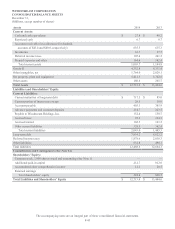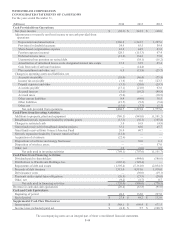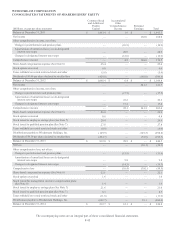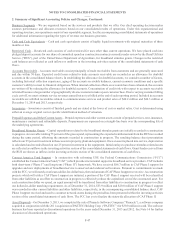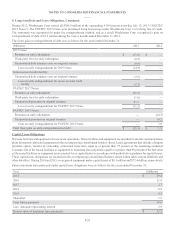Windstream 2014 Annual Report Download - page 165
Download and view the complete annual report
Please find page 165 of the 2014 Windstream annual report below. You can navigate through the pages in the report by either clicking on the pages listed below, or by using the keyword search tool below to find specific information within the annual report.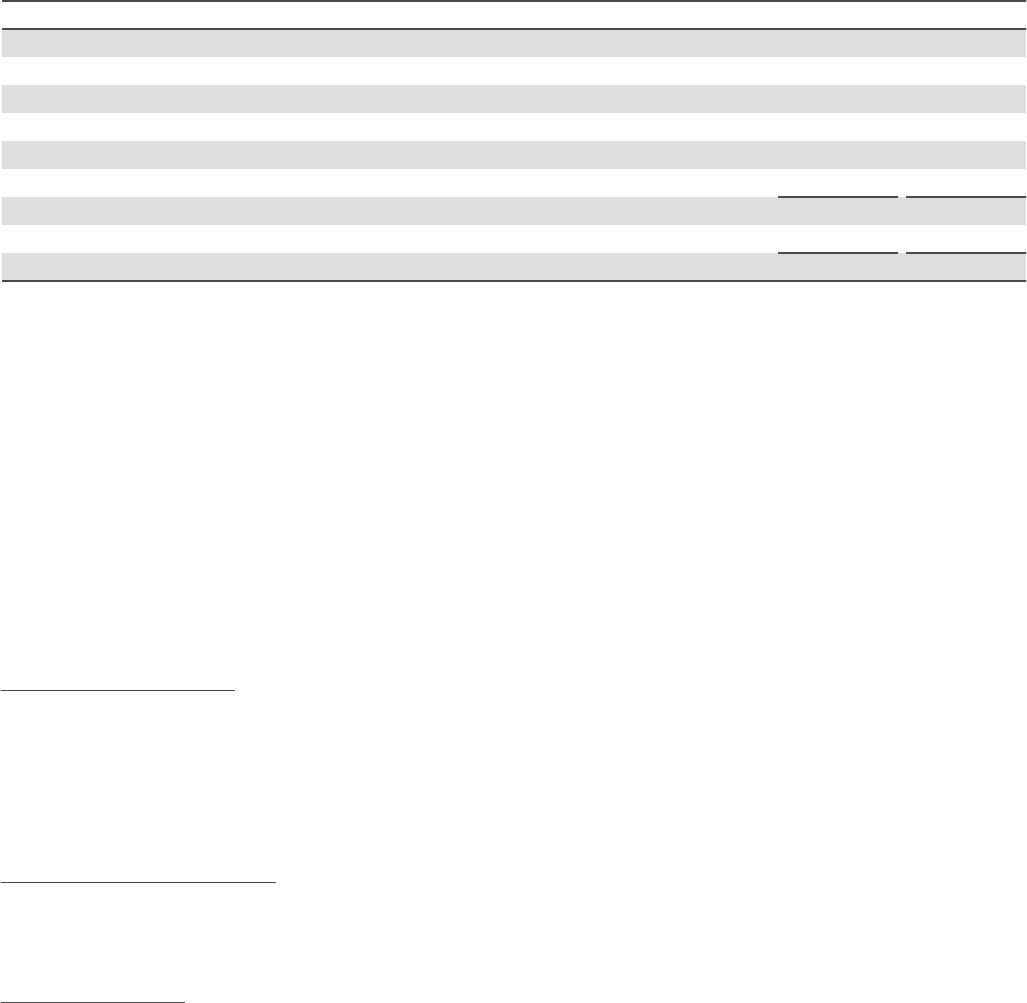
NOTES TO CONSOLIDATED FINANCIAL STATEMENTS
____
F-49
2. Summary of Significant Accounting Policies and Changes, Continued:
Net property, plant and equipment consisted of the following as of December 31:
(Millions) Depreciable Lives 2014 2013
Land $ 44.3 $ 44.7
Building and improvements 3-40 years 655.5 644.5
Central office equipment 3-40 years 5,750.4 5,563.7
Outside communications plant 7-47 years 6,906.6 6,630.7
Furniture, vehicles and other equipment 3-23 years 1,616.0 1,431.2
Construction in progress 365.2 312.6
15,338.0 14,627.4
Less accumulated depreciation (9,925.7)(8,924.8)
Net property, plant and equipment $ 5,412.3 $ 5,702.6
Our regulated operations use a group composite depreciation method. Under this method, when plant is retired, the original cost,
net of salvage value, is charged against accumulated depreciation and no immediate gain or loss is recognized on the disposition
of the plant. For our non-regulated operations, when depreciable plant is retired or otherwise disposed of, the related cost and
accumulated depreciation are deducted from the plant accounts, with the corresponding gain or loss reflected in operating results.
The RUS will have a retained security interest in the assets funded by the broadband stimulus grants over their economic life,
which varies by grant for periods up to 23 years. In the event of default of terms of the agreement, the RUS could exercise the
rights under its retained security interest to gain control and ownership of these assets. In addition, in the event of a proposed
change in control of Windstream, the acquiring party would need to receive approval from the RUS prior to consummating the
proposed transaction, for which pre-approval will not be reasonably withheld.
We capitalize interest in connection with the acquisition or construction of plant assets. Capitalized interest is included in the cost
of the asset with a corresponding reduction in interest expense. Capitalized interest amounted to $3.7 million, $7.9 million and
$10.9 million in 2014, 2013 and 2012, respectively.
Asset Retirement Obligations – We recognize asset retirement obligations in accordance with authoritative guidance on accounting
for asset retirement obligations and conditional asset retirement obligations, which requires recognition of a liability for the fair
value of an asset retirement obligation if the amount can be reasonably estimated. Our asset retirement obligations include legal
obligations to remediate the asbestos in certain buildings if we exit them, to properly dispose of our chemically-treated telephone
poles at the time they are removed from service and to restore certain leased properties to their previous condition upon exit from
the lease. These asset retirement obligations totaled $53.4 million and $52.3 million as of December 31, 2014 and 2013, respectively,
and are included in other liabilities in the accompanying consolidated balance sheets.
Impairment of Long-Lived Assets - We review long-lived assets for impairment whenever events or changes in circumstances
indicate that the carrying amount of the asset group may not be recoverable from future, undiscounted net cash flows expected to
be generated by the asset group. If the asset group is not fully recoverable, an impairment loss would be recognized for the
difference between the carrying value of the asset group and its estimated fair value based on discounted net future cash flows.
Derivative Instruments – Windstream Corp. enters into interest rate swap agreements to mitigate the interest rate risk inherent in
its variable rate senior secured credit facility. Derivative instruments are accounted for in accordance with authoritative guidance
for recognition, measurement and disclosures about derivative instruments and hedging activities, including when a derivative or
other financial instrument can be designated as a hedge. This guidance requires recognition of all derivative instruments at fair
value, and accounting for the changes in fair value depends on whether the derivative has been designated as, qualifies as and is
effective as a hedge. Changes in fair value of the effective portions of cash flow hedges are recorded as a component of other
comprehensive (loss) income in the current period. Any ineffective portion of the hedges is recognized in earnings in the current
period.






